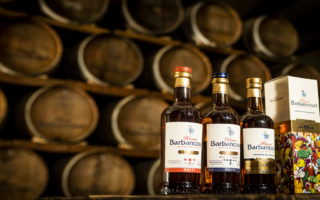Learn how to make moules marinières
This mainstay of French seaside holidays is simple to prepare at home, says Rosa Jackson
Visit any seaside town in France, and you will see diners happily slurping moules marinières served in big cast iron pots, using an empty shell like tweezers to pry out the golden mussels. If this dish seems ubiquitous, mussels cooked in butter, shallots and white wine had their origins in the Charente region before migrating towards northern France and later spreading throughout the country.
An Irish traveller, Patrick Walton, is credited with having accidentally created the first mussel farm. Shipwrecked in the Aiguillon bay on the Atlantic coast during the 13th century, he settled there and began to catch water birds with nets fastened to wooden stakes.
He soon found hundreds of mussels clinging to the stakes, and realized that this shellfish could be cultivated. French mussel production grew dramatically in the 19th century, but it wasn’t until 1954 that the first moules de bouchot were cultivated in the bay of Mont St-Michel and Normandy, which is now the world’s biggest mussel-producing region.
The prize for the most enthusiastic mussel-eaters goes to the city of Lille near the Belgian border, which gobbles up more than 400 tons of this shellfish on the day of its famous braderie, a giant flea market. The French consume 112 000 tons of mussels a year, half of them imported from other European countries, but nothing can match the sweet, succulent moule de bouchot.
Of all the ways of preparing mussels, moules marinières is by far the most popular as it requires no skill and allows the flavour of this shellfish to shine through. The name may refer to the striped shirt known as the marinière worn by sailors in Charente, though this word is also used to describe other fish and shellfish, and even frogs’ legs, cooked in this way.
Most important, of course, is the quality of the mussels. Though they are sold all year round and seem inextricably linked to summer, mussels are at their best in autumn and winter, when they have finished their reproductive season. Efficient transport means that you can find mussels from the bay of Mont St-Michel anywhere in France, but you can check their freshness by tapping any half-open shells, which should immediately close. Reject any that don’t respond, as well as those with broken shells.
Though the Larousse Gastronomique lists vinegar, thyme and bay leaf in the ingredients, I have always made a very satisfying minimalist marinière with only butter, shallots, dry Muscadet wine and parsley. The real star here is the mussel, which spends a year growing plump for the one second it takes to pop it into your mouth. Golden frites on the side, as in Lille and Belgium, are optional but desirable.
Recipe: Perfect moules marinières
Serves 2 as a main course or 4 as a starter
1 litre moules de bouchot
2 tbsp butter
1 small shallot, finely chopped
½ cup dry white wine, preferable Muscadet
A handful of chopped parsley
Sliced baguette, to serve
Clean the mussels by pulling off the beard (the stringy part on the side) and soaking them in a large bowl of cold water for 20 minutes. At the end of the soaking time lift the mussels out of the water with your hands, leaving the sand at the bottom.
In a large saucepan, heat the butter over medium heat until it starts to froth.
Add the shallot and stir until translucent. Turn the heat to high and pour in the white wine. When it boils, add the mussels to the pot and cover with a lid.
Cook for about 2 minutes, shaking the pot 2 or 3 times. When the shells have opened, sprinkle the mussels with the parsley and serve hot, with homemade frites if you like. Don’t forget to dip pieces of baguette into the cooking juices.
Share to: Facebook Twitter LinkedIn Email


